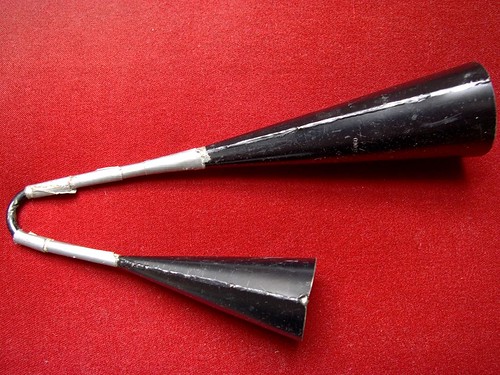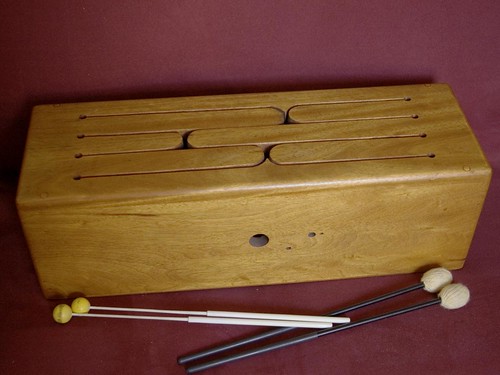A new working paper. Abstract, contents, and introduction below. Download here:
- Academia.edu: https://www.academia.edu/37668786/RHYTHM_NOTES_Polyrhythms_Construction_Practice_Performance
- Scribd: https://www.scribd.com/document/391883858/RHYTHM-NOTES-Polyrhythms-Construction-Practice-Performance
ABSTRACT: A series of notes about learning to play patterns, especially polyrhythms on a tongue drum with six tongues. 2 against 3, 3 against, 4, different stroking patterns, early learning and then phase changes when moving from slow to fast tempos, when moving from learning to consolidation and then performance. Becoming fluid at switching between different fixed patterns on to free improvisation, where you play any pattern you are capable of playing in whatever order you choose. Conscious and deliberate effort vs. automatic, unconscious and spontaneous play. The layout of musical ‘space’ for different instruments: drums, trumpet, piano, strings.
C O N T E N T S
What’s Up? I’ve always been a tapper 2
Learning Polyrhythms 5
Free-Drumming and Visual-Motor Space 9
Musical Space 13
Recruitment 13
Divisions of the Motor System 14
Repetition & the Inner Other 14
Timing and Pattern Stability 15
Streaming 20
Free Drumming, etc. 21
Adding Electronic Drum to the Repertoire 22
WHAT’S UP? I’VE ALWAYS BEEN A TAPPER
I’ve always been a tapper, my toes, my fingers on the table, whatever. We are, after all, rhythm machines. But when it came time to learn a musical instrument I choose trumpet and then, a few years later, piano. When I was living in Baltimore and going to Johns Hopkins I bought some used conga drums at Ted’s Music in Baltimore, a wonderful place, by the way, and still in business and taught myself how to get some decent sounds out of them. I even performed on them in public, on a few occasions.
When I moved to Troy, NY, I’d go to the Newport Festival, I believe it was, in Saratoga Springs. And one summer, most likely in the early 1980s, I bought this tongue drum:
A single glance tells you why it’s called a tongue drum, you play those wooden tongues. The different tongues give you different quasi-pitches. I say “quasi” because none of them have a well defined pitch center, but the tongues are clearly high or low in proportion to their length. The last time I went into a drum store (in New York City) to get another tongue drum I discovered that they’re all tuned to a pentatonic scale, which is OK if you’re looking for a melodic instrument, which I wasn’t. I prefer the less precisely tuned drum.
Some of the tongues are more responsive than others, so you have to do a bit of exploring to find the “sweet spot” for each tongue. And then you have to be sure to hit that spot each time you hit the tongue, unless, of course, you want a deader sound. Which is to say that you don’t just bang on the drum. You have to learn to work with it, learn how best it speaks. There are subtleties.
Always, there are subtleties.
That’s what these notes are about, not necessarily the subtleties, though sometimes, but about learning to play these drums, and bells as well (such as those on the cover page). Though I’d been tapping on them on and off ever since I’d bought them it wasn’t until early in this century (and millennium too) that I started systematically practicing them. By that time I’d been corresponding with the late Walter Freeman, the Berkeley neurobiologist, about the brain and music, so I started corresponding with him about learning to play these drums. Most, though not all, of the notes I’ve gathered here come from that correspondence, much of which was directed to Ralph Holloway as well. Holloway is a physical anthropologist at Columbia who is interested in the brains of early humans and pre-human hominins; he’s also a trumpet player.
◆◆◆
Learning Polyrhythms: To Walter Freeman: Playing drag triplets when young (three notes strung over a pair of toe taps). 30 years later, two against three, where I began playing bells, occasional balaphone, and the tongue drum; 2 against 3, 3 against 2 finally clicked and consolidated within a day or two. Then I went on to 3 against 4, somewhat harder (still not solid, though I’ve not tried in awhile). And then there’s some comments on breathlessness while playing the trumpet. I’ve written a set of variations on Thelonius Monk’s “Epistrophy”, where the first and third movements involve a bit of polyrhythmic trickery. When playing those I find myself getting out of breath more rapidly than is consistent with the physical difficulty involved. I speculate: “I’m guessing that the rhythmic complexity of the music brings about a different entrainment with physiology and that’s what’s making me breathless.”
Free-Drumming and Visual-Motor Space: To Walter Freeman and Ralph Holloway: “I noticed something interesting the other day that has to do with “free drumming” (to be defined). I seemed to be making choices in visual-motor space rather than auditory space. This is quite different from what I do when improvising on the trumpet, where I seem to make choices in auditory space. That is to say, when playing the trumpet I make choices in terms of what I want to hear rather than in terms of what I want my body to do. I’m not sure whether or not this is because I’m considerably more expert on the trumpet than on my drum.” Responses from both Freemand and Holloway and replies to both.
Musical Space: To myself: A continuation of the previous discussion where I consider the musical spaces of the piano and stringed instruments.
Recruitment: To myself: The idea is that the “impact,” “effect,” or “meaning,” of later passages depends on recruitment resulting from the earlier passages.
Divisions of the Motor System: To myself: I suspect that different levels of “psych” involve differing levels of recruitment of three different types of muscle fibers.
Repetition & the Inner Other: To myself: For the past two or three weeks I’ve noticed a subtle difference when I play a pattern on the tongue drum and hold it. It feels as though some “other being” is gently participating in my playing, making things a little steadier.
Timing and Pattern Stability: To Freeman, Freeman replies, and I reply to him: This is about stroking patterns for playing triplets (say, LRR LRR LRR... vs. LRL RLR LRL ...) alternating between high and low tones and then switching between stroke patterns. Sounds tricky. Freeman’s comment: “Yes, it's [Benjamin] Libet's territory, also Scott Kelso and his finger motion, which is the kind of state transition you describe, only his was much simpler, a shift from in phase to anti-phase locking with increasing tempo. He modeled that with Haken's synergetics.” There’s more (there’s always more).
Streaming: From a note to Sasha Shulgin: Streaming – the way different notes group themselves into perceptually different melodic streams – has practical consequences for musicologists trying to transcribe the different components of West African drum ensembles. It is all but impossible to figure out who's playing what line simply by listening to the sound and watching the players. Now, if you're a player in the middle of this . . . what's the subjective effect of being unable to hear who's doing what?
Free Drumming, etc.: To Freeman and Holloway: About two or three weeks ago I was doing some free drumming and things began “clicking” in a way they never had before. I was able to improvise long phrases of some complexity that, all of a sudden, made sense to me. Improvement since that time has been steady and rapid. The important stuff was simply learning to play repetitive patterns, lots of them, and to switch smoothly from one pattern to another. In fact, I would say that the main function of free drumming over the past year was to force some fluidity into my playing.
Adding Electronic Drum to the Repertoire: To Freeman and Holloway: This is about what happens when I start playing electronic drums. The playing surface changes, both in arrangment of surfaces and in the physical property of those surface. I now have a large array of sounds available to me. And, when I add the kick pedal, I’m now generating three streams of hits, rather than two. There’s a lot of stuff here. Freeman notes, “somewhat resembles my 4-limb involvement learning to fly a glider. your intuition of 'deep' structure is right on target. resonates with my current work on scale-free structure and phase transitions in cerebral cortex.”


No comments:
Post a Comment